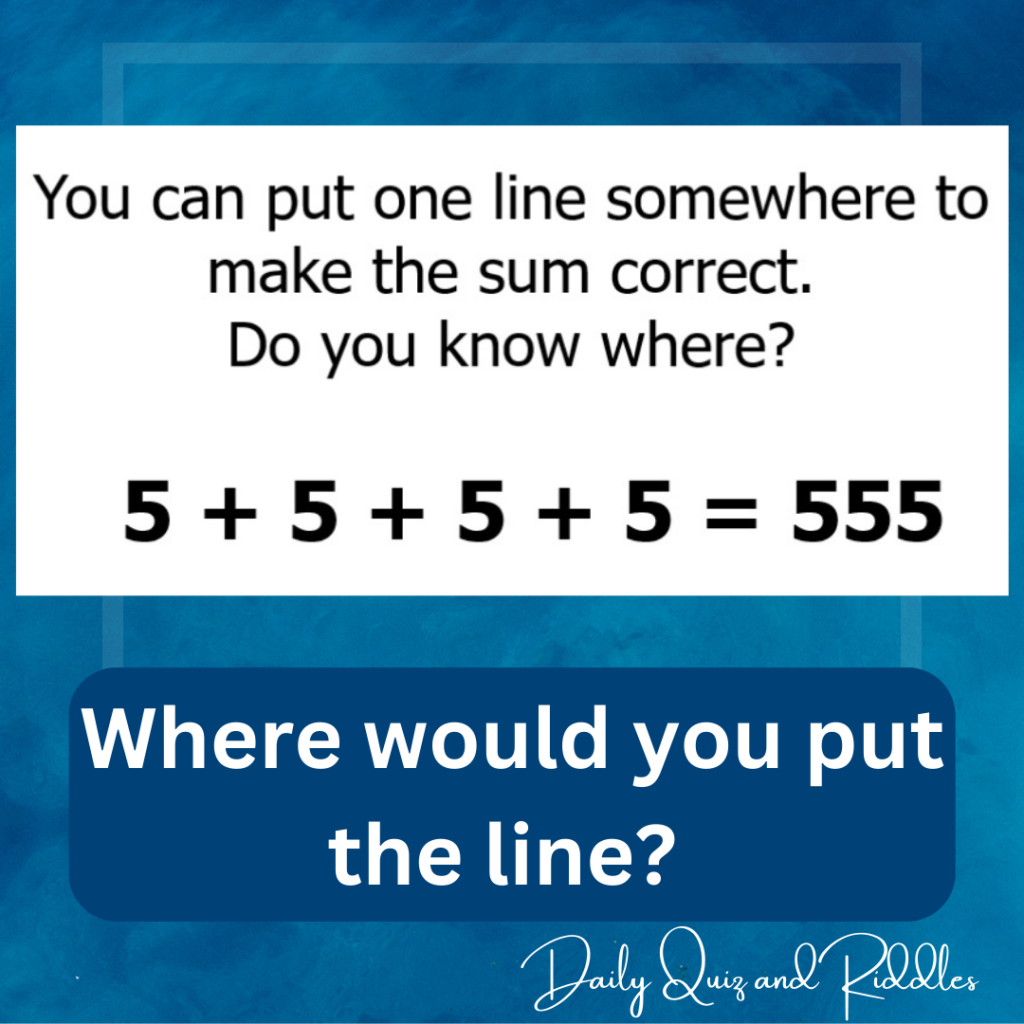Quiz
You have two buckets. In Bucket A, the temperature of the water is at 25 degrees C. In Bucket B, the temperature of the water is at 25 degrees F. You drop a coin into each bucket from the same height and they hit the water at exactly the same time. Which coin touches the bottom first?
Answer:
The coin in the 1st bucket. At 25 degrees C water is liquid, while at 25 degrees F it turns into ice.
Explanation:
Imagine this fascinating scenario: you find yourself in possession of two buckets, each filled with water. In Bucket A, the water’s temperature is a comfortable 25 degrees Celsius, while in Bucket B, the water’s temperature measures 25 degrees Fahrenheit. A unique experiment awaits as you drop a coin into each bucket from the same height, eagerly observing what unfolds.
As the coins descend through the air, suspense fills the atmosphere. The anticipation builds, and we wonder, which coin will touch the bottom first? Will the temperature of the water play a role in this curious experiment?
Intriguingly, the answer lies within the properties of water and how temperature affects its behavior, and most especially, realizing that degree Celsius is different from degree Fahrenheit.
In Bucket A, where the water is at a pleasant 25 degrees Celsius, we find ourselves in familiar territory. The water remains in its liquid form, allowing the coin to glide smoothly through its depths. With no obstacles to impede its descent, the coin gracefully reaches the bottom of the bucket, completing its journey with ease.
On the other hand, in Bucket B, where the water temperature hovers at 25 degrees Fahrenheit, a different transformation takes place. At this frigid temperature, water transitions into a solid state, forming ice. The coin encounters the frozen surface, which presents a formidable obstacle to its descent. It is met with resistance, unable to break through the icy barrier.
In this mesmerizing experiment, we witness the influence of temperature on the physical properties of water. While the coin in Bucket A traverses the liquid medium unhindered, the coin in Bucket B encounters the solid ice, halting its progress.
So, dear puzzle enthusiasts, the coin in the first bucket, where the water maintains its liquid form, triumphs as it touches the bottom first. The interplay between temperature and the physical state of water adds an intriguing twist to our perception of time and motion.



